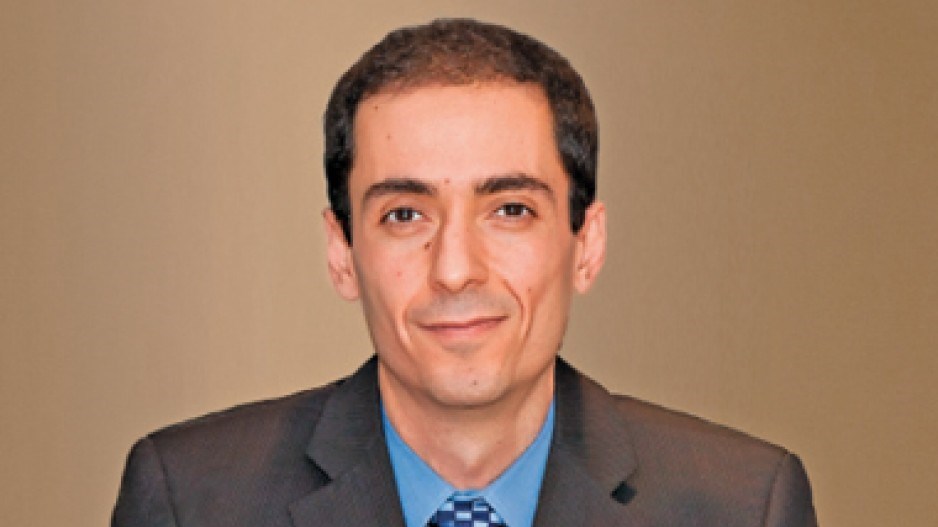Business in Vancouver's "How I Did It" feature asks business leaders to explain in their own words how they achieved a business goal in the face of significant entrepreneurial challenges. This week, Ali Tehrani talks about how he took a radically different approach to building his biotech company, Zymeworks Inc., which started out doing protein modelling for the pulp and paper sector but ended up creating new drugs for treating cancer.
"When I started this company the world of biotech was not ready to let go of its somewhat outdated ways. If you look at every other industry that's flourishing, they're taking advantage of high-tech.
"One of the challenges in drug design is that, because there are so many possibilities and only limited resources that scientists have, they will have to make an educated guess of which one out of thousands of choices is going to move forward. Traditionally, someone thinks about a compound that can affect disease in the body and starts testing that compound in test tube, then in animals, then in humans.
"ZymeCAD takes out all the guesswork in the test-tube phase before you go into animals. In that test-tube phase, you can have thousands upon thousands of choices. If you pick the wrong one, obviously you're going to take the wrong one into animals. It helps us pick the best leads in a very manageable number.
"This concept of molecular modelling and protein engineering was thought of back in the '70s. But computational horsepower wasn't the commodity back then that it is today. You can now buy some really powerful computers off the shelf, bring in some software guys, combine them with some computational chemists and build your own proprietary angle – i.e., ZymeCAD – and that's exactly what we did.
"We're a protein modelling, protein engineering group. We didn't originally start as a biopharma company. We started as an industrial biotechnology company. We wanted to apply our protein modelling capability to design better enzymes for pulp and paper.
"In 2005, we struck a research collaboration with Weyerhaeuser to research enzymes that would make their pulp and paper processing much more efficient and more green. In 2007, we shifted gears to taking our protein modelling and engineering and shifting to antibody therapeutics.
"From our early days on, we heavily depended on angel investment. We do have one venture capital firm on board, but we broke all the traditional rules. Friends and family and angel rounds typically cap at $5 million, but we've raised 75% of our funding through angels, and to date we've raised close to $30 million.
"Our last raise was $11 million in 2012. That provides the company with significant cash reserves to take its technology and focus on in-house drug development. We don't intend to take them deep into clinical trials ourselves. Our objective is to take it to late-stage proof of concept where they can be partnered out."




